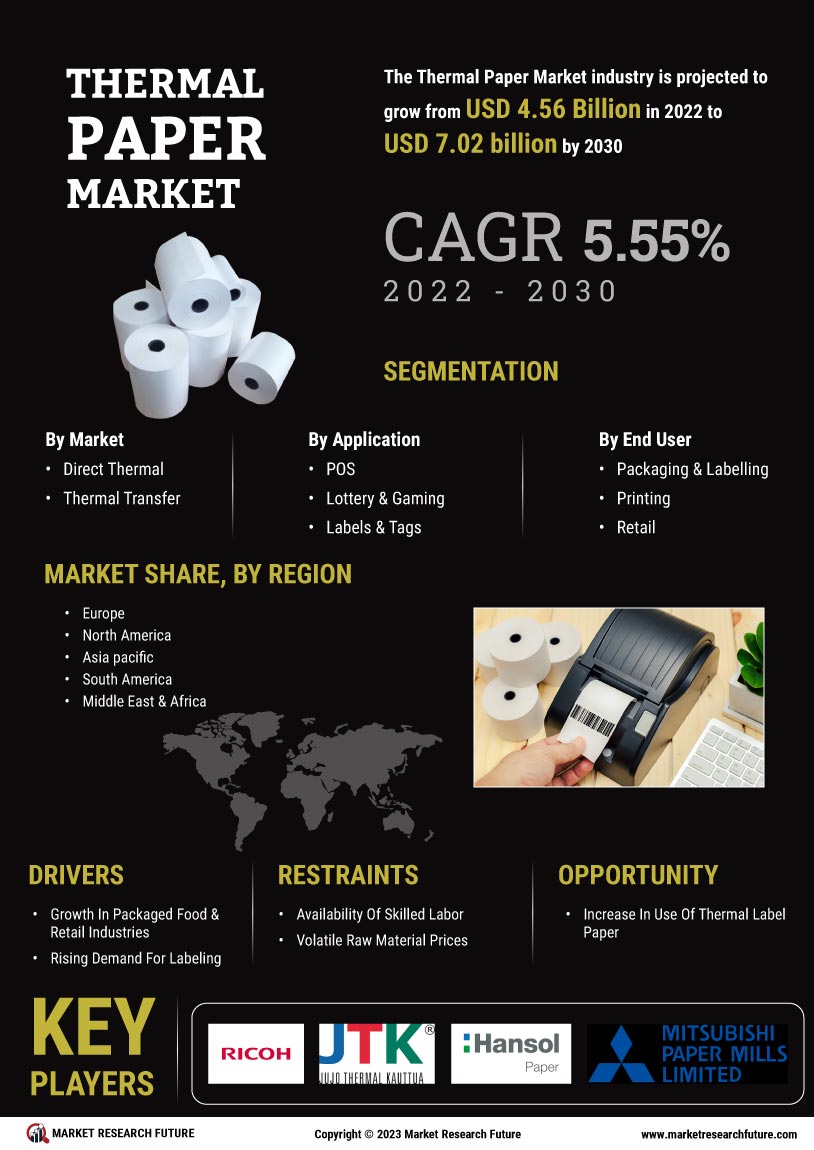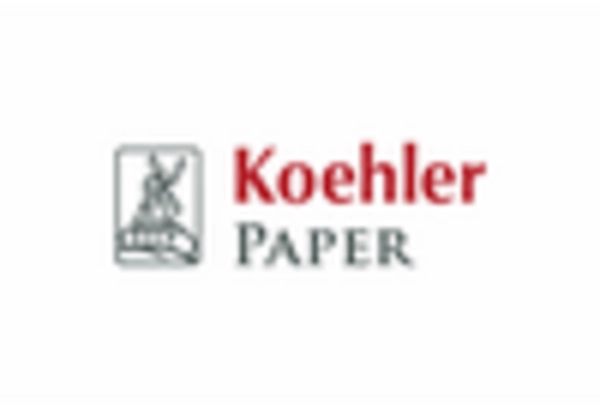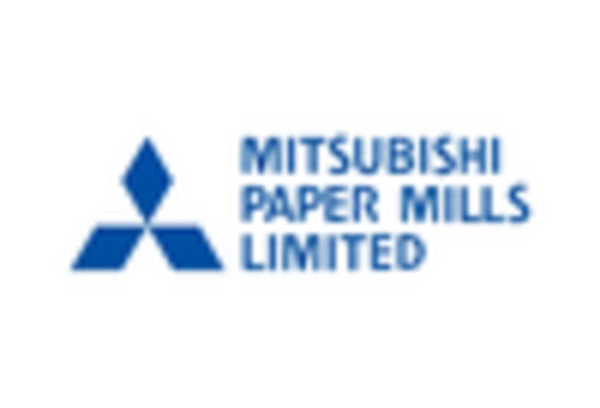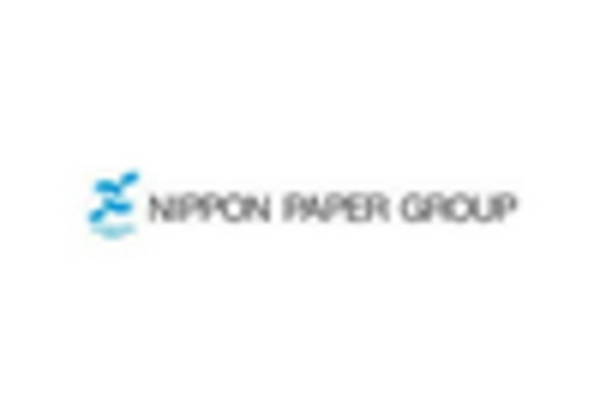Increasing Use in Healthcare Applications
The healthcare sector's growing reliance on thermal paper for various applications is emerging as a significant driver for the market. Thermal paper is widely used for printing patient records, prescriptions, and labels, which are essential for maintaining accurate medical documentation. The Global Thermal Paper Industry is likely to see increased demand from healthcare providers as they prioritize efficient and reliable printing solutions. In 2025, the healthcare segment is projected to account for a notable share of the thermal paper market, driven by the need for quick access to patient information and streamlined operations. This trend indicates that manufacturers may need to focus on developing specialized thermal paper products tailored to the unique requirements of the healthcare industry.
Rising Demand for Point of Sale Solutions
The increasing adoption of point of sale (POS) systems across various retail sectors appears to be a primary driver for the thermal paper market. As businesses seek to enhance customer experience and streamline operations, the demand for efficient receipt printing solutions has surged. In 2025, the retail sector is projected to account for a substantial share of the thermal paper market, driven by the need for quick and reliable transaction documentation. The Global Thermal Paper Industry is likely to benefit from this trend, as retailers increasingly opt for thermal printing technology to reduce operational costs and improve service speed. Furthermore, the integration of mobile payment solutions is expected to further bolster the demand for thermal paper, as businesses require high-quality printing for receipts and invoices.
Expansion of Retail and Hospitality Sectors
The ongoing expansion of the retail and hospitality sectors is expected to significantly impact the thermal paper market. As these industries grow, the demand for efficient printing solutions for receipts, tickets, and labels is likely to increase. The Global Thermal Paper Industry is poised to benefit from this trend, as businesses in retail and hospitality seek to enhance customer service and operational efficiency. In 2025, the retail and hospitality sectors are projected to contribute substantially to the overall demand for thermal paper, driven by the need for high-quality printing solutions. This growth suggests that manufacturers may need to innovate and diversify their product offerings to meet the evolving needs of these dynamic industries.
Growth in E-commerce and Online Transactions
The rapid expansion of e-commerce platforms and online transactions is significantly influencing the thermal paper market. As consumers increasingly prefer online shopping, the need for efficient order processing and documentation has become paramount. The Global Thermal Paper Industry is poised to experience growth as e-commerce businesses require reliable printing solutions for shipping labels, invoices, and receipts. In 2025, the e-commerce sector is anticipated to contribute notably to the overall demand for thermal paper, as companies seek to enhance their operational efficiency. This trend suggests that the market may witness innovations in thermal printing technology to cater to the specific needs of online retailers, thereby driving further growth in the industry.
Technological Innovations in Printing Solutions
Technological advancements in printing solutions are likely to play a crucial role in shaping the thermal paper market. Innovations such as improved thermal printing technology and the development of eco-friendly thermal papers are emerging trends that could redefine the industry landscape. The Global Thermal Paper Industry is expected to benefit from these advancements, as businesses increasingly seek sustainable and efficient printing options. In 2025, the introduction of new printing technologies may enhance the quality and durability of thermal paper products, thereby attracting a broader customer base. This evolution in technology suggests that manufacturers will need to adapt to changing consumer preferences and invest in research and development to remain competitive in the market.


















Leave a Comment